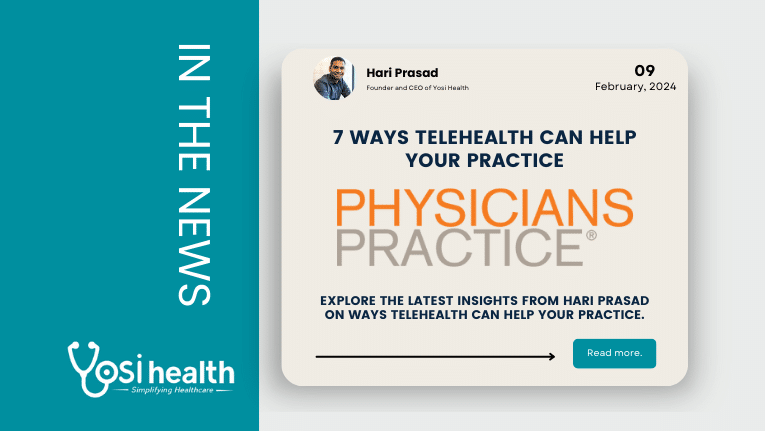
7 Ways telehealth can help your practice
The health care industry is witnessing a remarkable transformation in the way medical care is delivered. Telehealth, a concept once considered futuristic, has now become an integral part of the health care landscape, in large part due to its wide use and adoption during the pandemic.
Despite its revolutionizing impact on patient access and streamlining practice operations, telehealth remains underused in primary care.In fact, according to a 2021 HealthIT.gov study, over half of office-based physicians provided care via telemedicine for fewer than 25% of patient visits, and less than 20% of physicians used telemedicine for more than 50% of patient visits.
That lack of adoption means many outpatient primary care doctors are missing out on the demonstrated benefits of telehealth, such as reducing the need for in-office visits, easing the burden on the administrative staff, and providing unrivalled convenience for patients.
Several factors contribute to this underutilization:
Resistance to change: Many health care practitioners are accustomed to the traditional in-person consultation model and may be hesitant to adopt new technologies.
Regulatory challenges: Varying state regulations and insurance reimbursement policies have posed hurdles for health care providers seeking to implement telehealth services. The evolving regulatory landscape has created uncertainty and slowed adoption.
Technological barriers: While telehealth technology is more accessible than ever, some practices may lack the necessary infrastructure or expertise to integrate these solutions seamlessly into their workflows.
Patient reluctance: Some patients, especially older adults, may struggle with or be reluctant to use technology for their medical appointments. This has led to concerns about patient engagement and satisfaction in telehealth encounters.
For outpatient primary care doctors, embracing remote engagement technology offers an array of benefits that go beyond the immediate necessity of virtual visits. These benefits reshape the way practices operate and improve patient care.
As health care delivery continues to evolve, medical practices are well advised to embrace contemporary consumer behavior. Telehealth technology is an untapped gold mine for primary care doctors, offering enhanced patient care, streamlined operations, and reshaping the doctor-patient relationship.
While challenges such as regulatory complexities and technological barriers persist, the benefits far outweigh the hurdles. By embracing telehealth technology and leveraging its value, outpatient primary care doctors can truly revolutionize their care workflows, supporting their desire to deliver patient-centered, efficient, and accessible health care.
But incorporating telehealth is more than just an adaptation to the changing times; it’s an opportunity to thrive in a dynamic consumer-centric health care landscape. As the industry continues to witness the transformational power of technology, telehealth is a beacon of innovation, bridging the gap between patients and health care providers while ensuring the highest standards of medical care.
Hari Prasad is co-founder and CEO of Yosi Health.
To read the full article, Click Here

